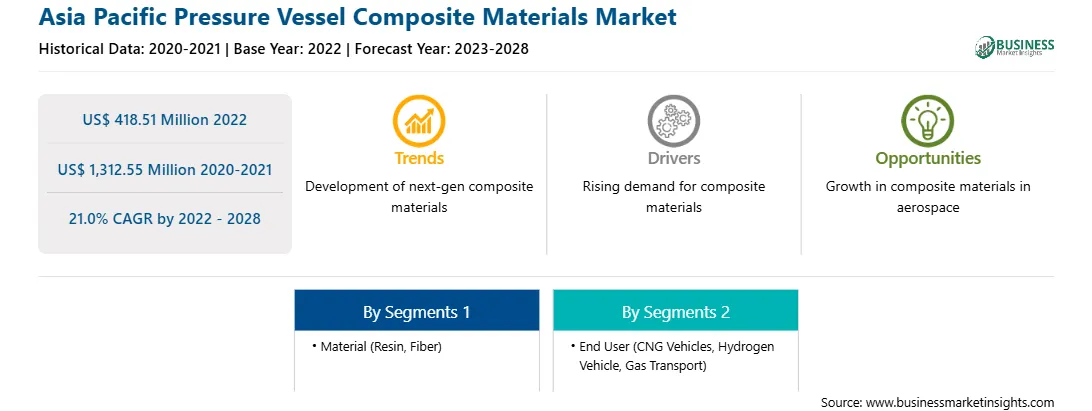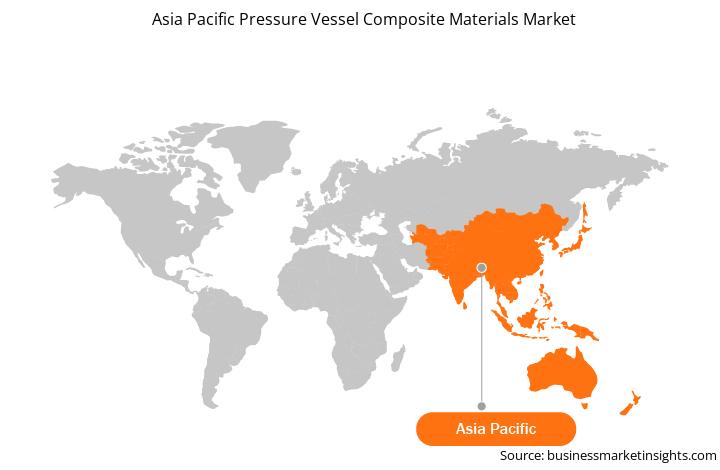Surging Approval of Carbon Fiber-Reinforced Plastic (CFRP) Pressure Vessels
As climate change has become scientifically linked to fossil fuel and greenhouse gas emissions, hydrogen has been identified as a sustainable, realistic option for decarbonizing transport by powering cars, heavy-duty trucks, forklifts/logistic equipment, railcars, marine vessels and aircraft, as well as stationary power plants. These systems require storing and transporting the hydrogen fuel in a pressurized gaseous, cryogenic liquid or hybrid cryo-compressed state. Carbon fiber reinforced plastic (CFRP) pressure vessels are a well-proven solution for high-pressure hydrogen gas storage owing to their lighter weight and convenient storage needs at higher pressure. Moreover, CFRP offers good corrosion resistance. Hydrogen pressure vessels are highly prone to hydrogen embrittlement in which metals become brittle due to prolonged contact of fluids. Pressure vessels lined with CFRP are highly resistant to this embrittlement making CFRP one of the most desirable materials in the market. Hydrogen fueled vehicles are witnessing huge demand as economies are shifting towards carbon neutrality. In the wake of these initiatives, many companies are investing huge amount in research and development of hydrogen-fueled aircrafts. For instance, in July 2020, ZeroAvia completed its first test flight of single-engine, six-seat, Piper aircraft using compressed hydrogen gas and is planning to test 19-seat hydrogen powered aircraft modified with twin-turboprop by 2020. Such initiatives are expected to significantly drive the demand for carbon-fiber reinforced plastics to design pressure vessels, boosting the pressure vessel composite materials market over the coming years.
Asia Pacific Pressure Vessel Composite Materials Market Overview
Asia Pacific pressure vessel composite materials market comprises several developing economies such as China, India, Japan, Australia, South Korea, among others. These emerging countries are experiencing growth in the industrial sector due to the presence of cheap labor. Asia Pacific is one of the leading players in the pressure vessel composite materials market owing to the rise in the use of pressure vessels in the automotive industry. Pressure vessels are mainly utilized in the automotive sector due to their easy availability and reduced cost. Using CNG and hydrogen vehicles in place of fuel vehicles also favors the growth of the pressure vessel composite materials market in Asia Pacific. The pressure vessel composite materials market improves efficiency and cost savings for the owners, occupants, and managers of pressure vessel composite materials.
Asia Pacific Pressure Vessel Composite Materials
Market Revenue and Forecast to 2028 (US$ Million)
Strategic insights for the Asia Pacific Pressure Vessel Composite Materials provides data-driven analysis of the industry landscape, including current trends, key players, and regional nuances. These insights offer actionable recommendations, enabling readers to differentiate themselves from competitors by identifying untapped segments or developing unique value propositions. Leveraging data analytics, these insights help industry players anticipate the market shifts, whether investors, manufacturers, or other stakeholders. A future-oriented perspective is essential, helping stakeholders anticipate market shifts and position themselves for long-term success in this dynamic region. Ultimately, effective strategic insights empower readers to make informed decisions that drive profitability and achieve their business objectives within the market.

| Report Attribute | Details |
|---|---|
| Market size in 2022 | US$ 418.51 Million |
| Market Size by 2028 | US$ 1,312.55 Million |
| Global CAGR (2022 - 2028) | 21.0% |
| Historical Data | 2020-2021 |
| Forecast period | 2023-2028 |
| Segments Covered |
By Material
|
| Regions and Countries Covered | Asia-Pacific
|
| Market leaders and key company profiles |
The geographic scope of the Asia Pacific Pressure Vessel Composite Materials refers to the specific areas in which a business operates and competes. Understanding local distinctions, such as diverse consumer preferences (e.g., demand for specific plug types or battery backup durations), varying economic conditions, and regulatory environments, is crucial for tailoring strategies to specific markets. Businesses can expand their reach by identifying underserved areas or adapting their offerings to meet local demands. A clear market focus allows for more effective resource allocation, targeted marketing campaigns, and better positioning against local competitors, ultimately driving growth in those targeted areas.

Asia Pacific Pressure Vessel Composite Materials
Market Segmentation
The Asia Pacific pressure vessel composite materials market is segmented based on material, end user, and country. Based on material, the Asia Pacific pressure vessel composite materials market is segmented into resin, fiber, and others. The thermoset cylinders segment held the largest market share in 2022.
Based on end user, the Asia Pacific pressure vessel composite materials market is segmented into CNG vehicles, hydrogen vehicle, gas transport, and others. The CNG vehicles segment held the largest market share in 2022.
Based on country, the Asia Pacific pressure vessel composite materials market is segmented into Australia, China, Japan, India, South Korea, and the Rest of Asia Pacific. China dominated the market share in 2022.
3M Co; Basf SE; Huntsman Corporation; Kolon Industries Inc.; Mitsubishi Chemical Holdings Corp; Solvay SA; Hexion Inc.; and Olin Corp are the leading companies operating in the Asia Pacific pressure vessel composite materials market.
The Asia Pacific Pressure Vessel Composite Materials Market is valued at US$ 418.51 Million in 2022, it is projected to reach US$ 1,312.55 Million by 2028.
As per our report Asia Pacific Pressure Vessel Composite Materials Market, the market size is valued at US$ 418.51 Million in 2022, projecting it to reach US$ 1,312.55 Million by 2028. This translates to a CAGR of approximately 21.0% during the forecast period.
The Asia Pacific Pressure Vessel Composite Materials Market report typically cover these key segments-
The historic period, base year, and forecast period can vary slightly depending on the specific market research report. However, for the Asia Pacific Pressure Vessel Composite Materials Market report:
The Asia Pacific Pressure Vessel Composite Materials Market is populated by several key players, each contributing to its growth and innovation. Some of the major players include:
The Asia Pacific Pressure Vessel Composite Materials Market report is valuable for diverse stakeholders, including:
Essentially, anyone involved in or considering involvement in the Asia Pacific Pressure Vessel Composite Materials Market value chain can benefit from the information contained in a comprehensive market report.